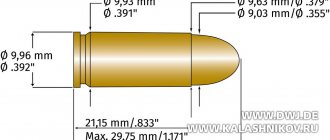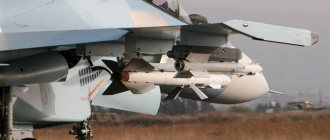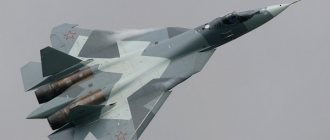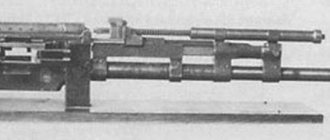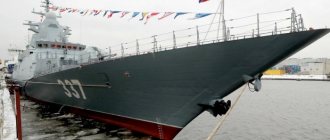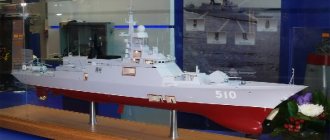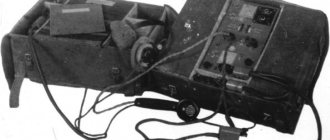Is the launch of the Tu-160M a “funeral” for the PAK DA stealth aircraft?
There is significant interest in the expert community in the test flight in Kazan of the updated Tu-160M strategic missile carrier. The plane was in the sky for about half an hour and performed maneuvers at an altitude of 600 meters. As Zvezda, the mouthpiece of the Russian Ministry of Defense, writes, “the pilots checked the stability and controllability of the vehicle in the air.” It is especially noted that the renaissance of the White Swan bomber (according to NATO codification, Blackjack is either a baton or a card game) took place on Putin’s .
In turn, Rostec is talking a lot about the deep modernization of the strategic missile carrier, the first flight of which took place at the end of 1981 - that is, 40 years ago. Rostec Communications Director Ekaterina Baranova commented on this news with pathos: “Today the modernized Tu-160M aircraft made its first flight. This is another victory for our aviation industry. Such machines have not been produced since 2008. Our specialists completely reconstructed the aircraft using the latest digital technologies.”
The winged pride of Russia (Part seven) – Tu-160
Here https://vott.ru/entry/46247 I found this article - it would be interesting to know the opinion about it: 100500 cruise missiles
We will proceed from the conditions that the United States nevertheless decided to attack us. The attack plan is based on a key factor - a cruise missile strike that disinfects our Strategic Missile Forces on their positional base areas. The purpose of this step is to guarantee the impossibility of our strategic nuclear forces launching a retaliatory strike after the start of the second phase of the attack - a strike by American ICBMs on our key military and civilian infrastructure: dams, nuclear power plants, large cities, fuel and lubricant storage facilities and State Reserves, large industrial enterprises. Moreover, in conditions where there is no need to expend the already meager supply of warheads (START-3 stipulates a maximum number of warheads of no more than 1,500 units).
Well, such a plan looks quite real and, at first glance, ideal from the point of view of anyone who watches TV and knows firsthand about the disastrous state of our army.
That's true, but what is the actual probability of success of such an operation, the key factor of which is secrecy? Abstracting from the RF Armed Forces, let's consider the secrecy of such an operation:
1. The first step is to spend more than one year developing such a complex and detailed plan. The US General Staff will need to solve a huge avalanche of tasks not only of a combat nature, but also of a purely logistical and material nature.
This problem can be solved, and I would not be surprised that it has already been solved long ago. As an old army proverb says, a bad general is one whose safe does not contain a plan to repel an attack from Mars.
Maximum secrecy.
2. The cruise missiles in service with the United States are incapable of hitting the positional areas of our strategic nuclear forces when launched from US territory. Therefore, for the planned strike, it is necessary to prepare carriers of these very missiles, which will be able to deliver them to the launch areas.
Now such carriers are: • B-52N – 44 in service, 8 in training, and 42 in varying degrees of suitability (the youngest is already more than half a century old) in storage; • Ohio nuclear submarine – 4 units refitted. for carrying the Kyrgyz Republic; • Nuclear submarine Improved elk - 23 units; • nuclear submarine Virginia – 5; • URO ArliBurk – 55; • URO Ticonderoga – 22.
For those who don't understand, this is a large part of their entire naval potential. So, according to the terms of the task, they attack our strategic nuclear forces with all the available potential of the carriers. To solve this problem, it is necessary to prepare each unit, carry out scheduled maintenance, repair work, etc. to prevent breakdown of this unit along the way. This process for products such as a destroyer or nuclear submarine is very labor-intensive and time-consuming, and often involves, among other things, partial or complete disassembly of some sections of the hull or the most important units such as the main turbine.
In order not to depend so much on MANDATORY maintenance periods, in global practice a scheme is used where a part (from a third to a half) of the same type of ships goes through different stages of planned maintenance, and the other part is in service at this time, on combat duty. This scheme ensures constant rotation of units and guaranteed defense capability of the country as a whole.
This means that in order to be able to use its full strike potential, the United States must sharply speed up maintenance on units that are already being repaired and, conversely, delay and reduce the resource consumption of units already in operation.
It is incredibly difficult not to notice such increased activity from a potential enemy.
3. Re-equip the missile launcher from conventional to special warheads, i.e. screw their heads with tactical nuclear weapons.
Considering all the experience of our two countries in monitoring compliance with strategic offensive arms in terms of monitoring each other’s carriers and warheads over the past few decades, it will be impossible not to notice these actions.
The use of missile launchers with a conventional warhead is not suitable for a disarming strike, since many performance characteristics of missile launchers deteriorate significantly when using conventional warheads, and they may simply not have enough power to penetrate the covers of the silo component - the basis of our strategic nuclear forces.
4. How many of these missiles are needed, or rather, how many of them can be carried by the existing carriers?
• B-52N (44 combat-ready, max. 94 units) carries up to 20 ALCMs; • nuclear submarine Ohio (4) carries up to 154 SLCMs; • The nuclear submarine Improved Elk (23) carries up to 12 SLCMs + 8; • The nuclear submarine Virginia (5) carries up to 12 SLCMs +8; • URO ArlieBurke (55); • URO Ticonderoga (22).
For the URO, we will simplify the assumption that all of them, during planned repairs, were re-equipped with the latest extreme version of the UVP vertical launch systems, for Ticonderoga this is 122 cells, for ArlieBurke - 96 cells.
In total, the maximum possible strike potential of the American group is 11,020 missile units.
But this is the maximum! This figure was obtained based on the fact that all URO cells would be filled with Tomahawks, and, therefore, these ships would be completely defenseless from any air attack, up to and including an attack by a flotilla of fishing boats with ancient termites installed on them. There will be nothing to defend against, nor, conversely, to attack the enemy blocking the path of the flotilla.
Someone could argue that they have 10 ABs and more than a dozen UDCs, thanks to the air component of which the flotilla will be able to defend itself and, conversely, sweep away any enemy. Yeah, guys, this is called all the eggs in one basket, THIS will definitely be impossible not to notice, and the general who pushed through the implementation of this idea can immediately be awarded the title of Hero of the Russian Federation and appointed to the position of marshal of our valiant army. The launch of one or two RS-20s with a dozen guided warheads in each in the area where this flotilla is concentrated will send the entire American fleet, the stronghold and basis of US military power in the world, to Charon’s galleys. So they will launch guided missiles in the standard or close to that component, in small squadrons, under the cover of AB, one per squadron.
Therefore, the total number of CR will be significantly smaller, approximately 7016, where: • URO - 3960 CR; • nuclear submarine Virginia + Los – 560 KR; • Premier League Ohio – 616 KR; • B-52N – 1880.
5. How much is there? Well, this is an interesting question, and very secret. BUT, judging by the open data for the production and shipment to the customer of the last batch of Tomahawk Block IV in the amount of 2000 units. it took the manufacturer 6 years, i.e. about 30 KR per month. It is difficult to calculate the size of the American arsenal, but it is worth considering that during the Yugoslav campaign alone the Americans spent more than 1000 Kyrgyz Republic, and during the active phase of Iraq-2 about the same amount. Those. These two conflicts required American industry to work 6 years to restore reserves.
During the Iraqi campaign, the Americans declared that the maximum capacity of their industry would be enough to produce 500 KR per year to restore reserves. But, as we see, production actually proceeded at a much slower pace.
Based on the rates of 2004-2010, it takes 19 years to produce the minimum required amount of CR, plus the 6 years it took to produce these 2000 units.
6. Let's move on, after the preparatory operation it is necessary to begin collecting ships at the points of concentration of flotillas, from where these flotillas will secretly go to the launch areas of the Kyrgyz Republic.
It is IMPOSSIBLE not to notice the departure of all the large surface ships of the strongest maritime power of our time from their operational areas, home ports, and docks!
Yes, by the way, what are we talking about ships and ships, the same processes will take place among nuclear submarines and strategists, it’s just that the work and movement of the latter, due to the relative small number and much greater mobility, will be less noticeable, but for specialists it will be just as obvious as withdrawal of all surface ships from the world's oceans.
7. Further, flotillas of surface and underwater ships enter our part of the Arctic Ocean through the Barents Sea and the Bering Strait; strategic aviation, taking off from home airfields (there have not been such mass flights since the end of WWII), heads for the North Pole.
How can you waste SO MANY ships? This is impossible, especially considering the density of traffic of merchant ships (according to the conditions of the problem, we believe that the Russian army and intelligence are in complete prostration and do not react to anything) that are present in these busy areas of the world’s oceans.
8. Hurray! Start, finally, the time of expectations, hopes and anxieties is over, 7000 KR in fire and flame went to their goals at once... Stop, why at once? The Yugoslav operation showed, and the Iraqi operation confirmed that it is clearly not recommended to launch American missiles in one gulp. The amers in the above-mentioned conflicts, in the best case, used the rate of fire of the Kyrgyz Republic per minute.
So, what does it turn out to be, for every little thing like Virginia it’s 20 minutes, for Ticonderoga it’s already 2 hours, and for Ohio it’s already almost 3! That is, in other words, in order to shoot back, this entire flotilla needs to stand and shoot for 3 (three) hours, stand and shoot 7,000 aircraft. Moreover, it is worth paying attention to the fact that by the time the first tomahawks reach their targets, the flotilla will not have time to shoot back to the end. A tomahawk's maximum flight in a straight line takes less than 2.5 hours.
Combat use
For the first time, a missile carrier of this type took part in hostilities on November 17, 2015, when long-range aviation aircraft of the Russian Aerospace Forces were involved in strikes against targets of the terrorist organization “Islamic State” (IS, banned in the Russian Federation) in Syria. On that day, two Tu-160 sorties were carried out from Engels airfield, and 16 Kh-101 cruise missiles struck targets in the provinces of Aleppo and Idlib. Subsequently, Long-Range Aviation aircraft were repeatedly used in the Syrian campaign.
[edit] Links
- History of creation, characteristics, comparison with friendly analogues
- Racially Pindosian satellite images of a Tu-160 undergoing secret maintenance at the secret Borisoglebskoye airfield, which seems to be securely hidden right in Kazan
- The future of the subject
- Gospel from nnm.ru
| [☭ ] | |||||||||||||||||
| |||||||||||||||||
| [ + ] Tu-160 is the pride of the aircraft industry. | |||||||||||||
| |||||||||||||
Description of the Tu 160 aircraft
The design of the vehicle is based on an integral aerodynamic layout with a low-mounted wing with sweep that changes in flight. The sweep can be changed from 200 to 650. The wing is equipped with rich mechanization - on each console there are slats along the entire length, and flaps at the rear. In front of the flaps, a flaperon and an interceptor were built into the console design.
The radio-transparent antenna radome hides the on-board radar for viewing the front sphere inside. In the space between the cockpit and the surveillance locator blocks there is a Sopka radar, designed for low-altitude flights around the terrain.
The crew cabin is designed for four members - two pilots and two navigators, who sit side by side. The first navigator is responsible for aircraft navigation, the other for the use of weapons. The seats are equipped with a catapult.
Under the influx of the wing in front there are multi-mode air intakes that regulate the incoming air flow and supply it to the engines. The cross-section of the intake channels changes, from rectangular to round. The power plant consists of four NK-32 turbofan engines, two located on each side of the fuselage.
The fin of the Tu-160 is made of two sections, the fuselage body is rigidly connected to the lower part, and the upper trapezoidal section serves as a rudder. The rotation mechanism and the rotation stabilizer itself are attached to the fixed part of the keel.
The landing gear of the aircraft is made according to a three-legged design, the main landing gear on each leg has six wheels that retract into a niche in the center section between the air intakes and the weapons compartment. The nose landing gear is two-wheeled and, in the retracted position, is located between the weapons compartment and the cockpit.
The design of the aircraft allows 171 tons of fuel to be placed in 13 caisson tanks, which at cruising speed with a sweep of 350 makes it possible to cover a distance of 14 thousand km. In-flight refueling is also provided - the fuel receiver in the form of a retractable boom is located in the bow, in front of the cockpit.
Tu 160 in the air
To fulfill its mission - breaking through enemy air defenses and striking important strategic targets, the Tu-160 is equipped with the Baikal airborne defense system. This complex includes stations for detecting threats from aviation and air defense systems, electronic warfare stations and automatic devices for shooting decoys and decoys.
At the bottom of the nose of the aircraft there is an OPB-15T optical-electronic sight for precise bombing and a television camera in the front lower sphere. An inertial navigation system, a celestial navigation system and satellite tracking system equipment allow for high-precision flights with the aircraft's location displayed on the navigator's indicators.
Modernization
In 2002, the Russian Ministry of Defense entered into an agreement with the Kazan Aviation Plant to modernize 15 Tu-160 aircraft and extend their service life until 2030. During this work, radio-electronic equipment, avionics, engines, cable management, etc. were replaced, and modernization was carried out for the use of new high-precision cruise missiles X-101.
On April 27, 2022, Deputy Minister of Defense of the Russian Federation Yuri Borisov said that when visiting Kazan Air Force, all 16 Tu-160s that were at that time in the combat composition of the Aerospace Forces would be subjected to testing. The Deputy Minister emphasized that the service life of these vehicles will be enough until the new Tu-160 missile carriers enter service. On November 28, 2022, a source of journalists in the defense-industrial complex reported that assembly at KAZ had been completed and the first bomber that had undergone such a modernization had been sent for testing.
Accidents and disasters
Over the entire history of operation, two copies of the Tu-160 were lost. In the spring of 1987, the second aircraft of the experimental series crashed due to engine destruction; all crew members managed to eject successfully. On September 18, 2003, a Tu-160 (tail number “01 red”, proper name “Mikhail Gromov”) crashed near the village. Stepnoye (Sovetsky district, Saratov region). During the check flight, due to a failure of the drainage system, the right fuel tank “collapsed” and a fire broke out in the right engines, after which the plane exploded and collapsed, killing the crew.
[edit] History of appearance
Tu-160 in the upper layers of the atmosphere In all its glory
In the early 70s, a situation arose in the USSR when, in fact, there was not a single aircraft that could be guaranteed to deliver a portion of atomic pussies to our Western partners. The Tu-95, which was in service at that time (and continues to be) could, of course, deliver a couple, but not guaranteed. No one bothered too much about this problem, since there were already sufficient quantities of self-delivering pussies. But, having thought about the possibility of waving them, over the hill they came to the conclusion that this is too scary a thing, because someone, having crap themselves, may not understand and fuck in advance, just so as not to miss the blow. Having decided that submarines were not visible, and therefore they were also poorly suited for demonstrating the length of willpower, the choice was made on airplanes. The B-52 no longer gave any guarantees, and the Pindos leadership decided to cut something more epic. But the news that the Americans were making a new strategic bomber forced the then leadership of the USSR to shit a lot of bricks and quickly allocate several tens of thousands of hundreds of oil for the same one.
The Sukhoi Design Bureau and the Myasishchev Design Bureau began work on the bomber. Since the time of Khrushchev, the Tupolev Design Bureau has been in conflict with the party, because Nikita Sergeich purely voluntarily killed several of their prodigies, so the oldest design bureau was not invited to play these games.
By the beginning of the 70s, both design bureaus presented their preliminary designs. The T-4 was presented from Sukhoi (and no MS - T-4MS were cut later), by the way, the car is impressive to the point of brick chips in the sphincter and just as expensive: an all-titanium airframe - this is not bullshit, but Myasishchev Design Bureau - M- 18. Just when everyone was overjoyed and began to open the champagne, the Air Force leadership presented new requirements for the future aircraft. This is where the Tupolev Design Bureau got involved with its “product 70”, which was a little more than half converted from a civilian Tu-144. As a result, the updated version of Sukhoi’s comrade T-4MS was chosen, because it was glamorous and gothic, like a flying saucer, the M-18 looked like dull shit against its background, and the “product 70” was a converted civilian airliner, which caused genuine horror among the military and tears of humiliation among the Tupolevites.
But Sukhoi was meanwhile working on another Winrar, the Su-27 (then still its prototype T-10), and officially he had no time for these strategic bombers of yours, therefore all the developments were transferred to the Tupolev Design Bureau with instructions to do something like that
. The Tupolevites pretended to be dummies and sent the T-4MS to hell, deciding to make their own plane with blackjack and whores (a little more than half similar to Myasishchev’s M-18).
Flight performance
- wingspan - 55.7 m (with a sweep of 20 degrees), 35.6 m (with a sweep of 65 degrees);
— height — 13.6 m;
— maximum take-off weight — 275 thousand kg;
— maximum speed — about 2 thousand km/h (Mach 2);
— practical ceiling — 15 thousand m;
— practical range — 12 thousand 300 km, maximum range — 14 thousand 600 km;
— flight duration — up to 15 hours;
— crew — 4 people;
- weapons: in two drum launchers in the bomb bay - 12 Kh-55SM or Kh-101 strategic cruise missiles (after modernization of the aircraft), or 24 Kh-15S missiles. Tu-160s are capable of carrying bombs - 12 high-explosive free-fall FAB-1000 or 22 FAB-750, as well as adjustable KAB-1500, high-power volumetric explosion bombs, atomic bombs and sea mines. The maximum combat load is 45 thousand kg.
Why are strategic missile carriers needed?
Of course, the presence of a powerful nuclear arsenal in the missile version was a sufficient guarantee of peace, but it was impossible to launch a warning strike or simply “hint” to the enemy about the undesirability of subsequent actions with its help.
The situation was so serious that the country's leadership finally realized the need to develop a new strategic bomber. This is how the story of the famous TU-160 began, the technical characteristics of which are described in this article.

